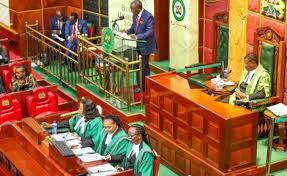
Kenya’s National Treasury has unveiled a Sh4.2 trillion budget for the 2025/26 financial year, outlining the government’s key spending priorities and economic plans for the next fiscal cycle. The budget was tabled before Parliament in a highly anticipated session, with a strong focus on infrastructure, social services, and debt management.
According to the presentation, the government aims to raise approximately Sh3.2 trillion in revenue through tax collections, levies, and other domestic sources. The remaining deficit—estimated at Sh1 trillion—will be financed through a mix of external loans and domestic borrowing.
A large share of the budget has been allocated to infrastructure development, including roads, railways, and energy projects, in a bid to stimulate economic growth and attract investment. Education and healthcare have also received increased funding, with plans to hire more teachers, expand school infrastructure, and strengthen primary healthcare services across the country.
Social protection programs, including cash transfers to vulnerable groups, have also been prioritized, alongside support for agriculture and food security initiatives.
The budget places emphasis on fiscal discipline, with new measures introduced to curb wastage, improve transparency in government spending, and reduce dependency on costly domestic debt.
Parliament is expected to debate and review the budget in the coming weeks, after which it will be subjected to a vote. If passed, the spending plan will guide the government’s financial operations from July 2025 through June 2026.

